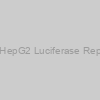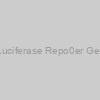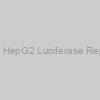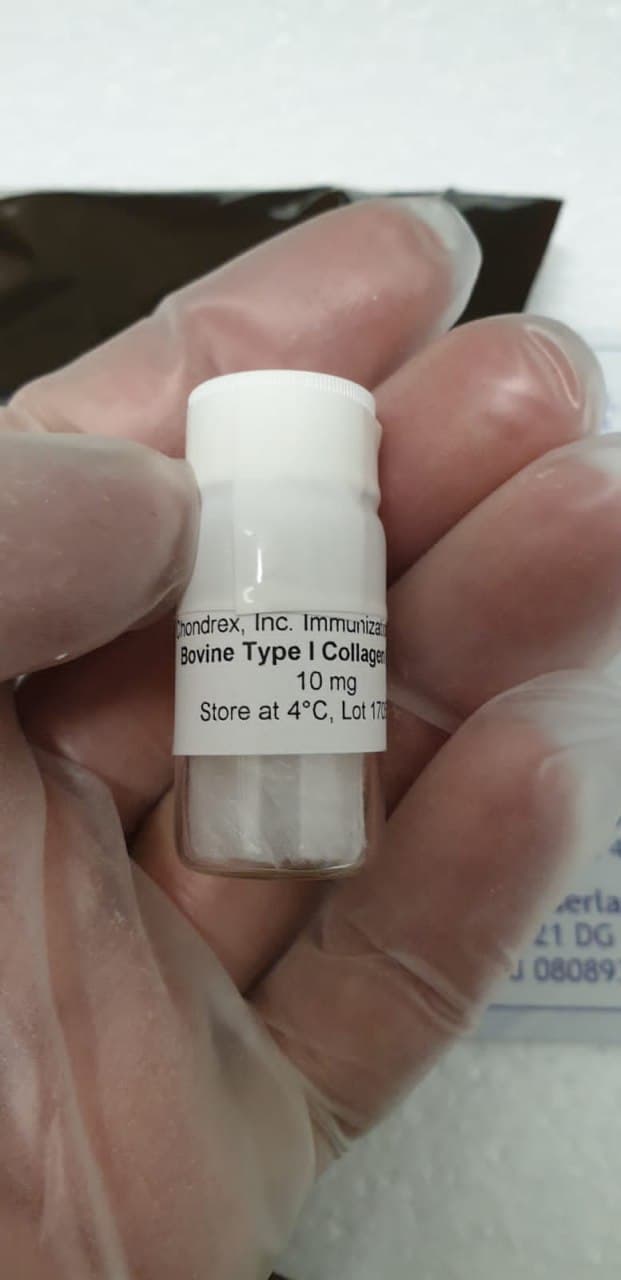The variety and complexity of biotechnological applications are continually rising, with ever increasing ranges of manufacturing hosts, cultivation situations and measurement duties. Consequently, many analytical and cultivation programs for biotechnology and bioprocess engineering, similar to microfluidic units or bioreactors, are tailored to exactly fulfill the necessities of particular measurements or cultivation duties. Additive manufacturing (AM) technologies supply the likelihood of fabricating tailored 3D laboratory tools instantly from CAD designs with beforehand inaccessible ranges of freedom in phrases of structural complexity.
This assessment discusses the historic background of these technologies, their most promising present implementations and the related workflows, fabrication processes and materials specs, along with some of the key challenges related to utilizing AM in biotechnology/bioprocess engineering. To illustrate the good potential of AM, chosen examples in microfluidic units, 3D-bioprinting/biofabrication and bioprocess engineering are highlighted.
Cuban advances in biotech have made headlines, notably for the reason that US-Cuba rapprochement and signing of the historic memorandum of understanding between the US Department of Health and Human Services and Cuba’s Ministry of Public Health in June. Some 34 Cuban establishments with 22,000 workers are the spine of a biotech trade that dates to the early 1980s, acquiring novel merchandise which have sparked curiosity amongst potential international companions. While a quantity of these Cuban merchandise are registered in numerous nations, their testing in the USA stays ensnared in the pink tape of embargo legal guidelines that are inclined to make buyers skittish and thus delay, if not curtail, joint analysis and scientific trial applications to the FDA.
Safety Profile of Anticancer and Immune-Modulating Biotech Drugs Used in a Real World Setting in Campania Region (Italy): BIO-Cam Observational Study.
To examine the prevalence of hostile occasions (AEs) in naïve sufferers receiving biotech medication. Design: A potential observational examine. Setting: Onco-hematology, Hepato-gastroenterology, Rheumatology, Dermatology, and Neurology Units in Campania Region (Italy). Participants: 775 sufferers (53.81% feminine) with imply age 56.0 (SD 15.2). The imply follow-up/affected person was 3.48 (95% confidence interval 3.13-3.84). Main consequence measures: We collected all AEs related to biotech medication, together with severe infections and malignancies.
Serious AEs have been outlined in keeping with the International Conference on Harmonization of Technical Requirements for Registration of Pharmaceuticals for Human Use, scientific security knowledge administration: definitions and requirements for expedited reporting E2A guideline. Results: The majority of the examine inhabitants was enrolled in Onco-hematology and Rheumatology Units and the commonest analysis have been hematological malignancies, adopted by rheumatoid arthritis, colorectal most cancers, breast most cancers, and psoriatic arthritis.
The mostly prescribed biotech medication have been rituximab, bevacizumab, infliximab, trastuzumab, adalimumab, and cetuximab. Out of 775 sufferers, 320 skilled a minimum of one AE. Most of sufferers skilled AEs to cetuximab remedy, rituximab and trastuzumab. Comparing feminine and male inhabitants, our findings highlighted a statistically important distinction in phrases of AEs for adalimumab (35.90% vs. 7.41%, p < 0.001) and etanercept (27.59% vs. 10.00%, p = 0.023). Considering all biotech medication, we noticed a peak for all AEs prevalence at follow-up 91-180 days class. Bevacizumab, brentuximab, rituximab, trastuzumab and cetuximab have been extra generally related to severe hostile occasions; most of these have been probably associated to biotech medication, in keeping with causality evaluation.
Three circumstances of severe infections occurred. Conclusions: The outcomes of our examine demonstrated that almost all of AEs weren’t severe and anticipated. Few circumstances of severe infections occurred, whereas no case of malignancy did. Overall, the protection profile of biotech medication used in our inhabitants was much like these noticed in pivotal trials. Notwithstanding the optimistic outcomes of our examine, some security issues nonetheless stay unresolved. In order to gather extra effectiveness and security knowledge on biotech medication, the gathering and evaluation of actual world knowledge needs to be endorsed in addition to the administration of post-authorization research.

What Will Be the Benefits of Biotech Wheat for European Agriculture?
In European nations, wheat occupies the biggest crop space with excessive yielding manufacturing. France, a significant producer and exporter in Europe, ranks the fifth producer worldwide. Biotic stresses are European farmers’ main challenges (fungal and viral ailments, and insect pests) adopted by abiotic ones similar to drought and grain protein composition. During the final 40 years, 1136 scientific articles on biotech wheat have been printed by USA adopted by China, Australia, Canada, and European Union with the UK. European analysis focuses on pests and ailments resistances utilizing broadly marker-assisted choice (MAS). Transgenesis is used in fundamental analysis to develop resistance towards some fungi (Fusarium head blight) whereas RNA interference (RNAi) silencing is used towards some fungi and virus.
 Luciferase Reporter Gene Assay Kit |
|
Z5030003 |
Biochain |
1,000 assays |
EUR 1118 |
 Dual Luciferase Reporter Gene Assay Kit |
|
KTA8010-1000T |
Abbkine |
1000 T |
EUR 819 |
 Dual Luciferase Reporter Gene Assay Kit |
|
KTA8010-100T |
Abbkine |
100 T |
EUR 149 |
 Dual Luciferase Reporter Gene Assay Kit |
|
KTA8010-each |
Abbkine |
each |
Ask for price |
 Single Firefly Luciferase Reporter Gene Assay Kit |
|
K2236-100 |
ApexBio |
100T |
EUR 68 |
|
Description: Transcriptional Regulation|Reporter Gene |
 Single Firefly Luciferase Reporter Gene Assay Kit |
|
K2236-1000 |
ApexBio |
1000T |
EUR 336 |
|
Description: Transcriptional Regulation|Reporter Gene |
 Amplite® Luciferase Reporter Gene Assay Kit *Bright Glow* |
|
12518-1plate |
AAT Bioquest |
1 plate |
EUR 166 |
|
|
|
Description: Common reporter genes include beta-galactosidase, beta-glucuronidase and luciferase. |
 Amplite® Luciferase Reporter Gene Assay Kit *Bright Glow* |
|
12519-10plates |
AAT Bioquest |
10 plates |
EUR 446 |
|
|
|
Description: Common reporter genes include beta-galactosidase, beta-glucuronidase and luciferase. |
 Amplite® Luciferase Reporter Gene Assay Kit *Bright Glow* |
|
12520-100plates |
AAT Bioquest |
100 plates |
EUR 3321 |
|
|
|
Description: Common reporter genes include beta-galactosidase, beta-glucuronidase and luciferase. |
 Amplite® Luciferase Reporter Gene Assay Kit *Maximized Luminescence* |
|
12519 |
AAT Bioquest |
10 plates |
EUR 455 |
|
Description: Common reporter genes include beta-galactosidase, beta-glucuronidase and luciferase. |
 Amplite® Gaussia Luciferase Reporter Gene Assay Kit *Bright Glow* |
|
12530-1plate |
AAT Bioquest |
1 plate |
EUR 222 |
|
|
|
Description: Common reporter genes include beta-galactosidase, beta-glucuronidase and luciferase. |
 Amplite® Gaussia Luciferase Reporter Gene Assay Kit *Bright Glow* |
|
12531-10Plates |
AAT Bioquest |
10 Plates |
EUR 846 |
|
|
|
Description: Common reporter genes include beta-galactosidase, beta-glucuronidase and luciferase. |
 Amplite® Gaussia Luciferase Reporter Gene Assay Kit *Bright Glow* |
|
12532-100plates |
AAT Bioquest |
100 plates |
EUR 4447 |
|
|
|
Description: Common reporter genes include beta-galactosidase, beta-glucuronidase and luciferase. |
 Amplite® Renilla Luciferase Reporter Gene Assay Kit *Bright Glow* |
|
12535-1plate |
AAT Bioquest |
1 plate |
EUR 222 |
|
|
|
Description: Common reporter genes include beta-galactosidase, beta-glucuronidase and luciferase. |
 Amplite® Renilla Luciferase Reporter Gene Assay Kit *Bright Glow* |
|
12536-10plates |
AAT Bioquest |
10 plates |
EUR 1070 |
|
|
|
Description: Common reporter genes include beta-galactosidase, beta-glucuronidase and luciferase. |
 Amplite® Renilla Luciferase Reporter Gene Assay Kit *Bright Glow* |
|
12537-100plates |
AAT Bioquest |
100 plates |
EUR 4447 |
|
|
|
Description: Common reporter genes include beta-galactosidase, beta-glucuronidase and luciferase. |
 Luciferase Reporter Assay Kit |
|
55R-1540 |
Fitzgerald |
200 assays |
EUR 180 |
|
|
|
Description: Assay Kit for detection of Luciferase Reporter in the research laboratory |
 Luciferase Reporter Assay Kit |
|
K2181-200 |
ApexBio |
200 assays |
EUR 130 |
 Luciferase Reporter Assay Kit |
|
K801-200 |
Biovision |
each |
EUR 235.2 |
 Luciferase Reporter Assay Kit |
|
GWB-AXR371 |
GenWay Biotech |
200 assays |
Ask for price |
 Amplite® Renilla Luciferase Reporter Gene Assay Kit *Maximized Luminescence* |
|
12536 |
AAT Bioquest |
10 plates |
EUR 1092 |
|
Description: Common reporter genes include beta-galactosidase, beta-glucuronidase and luciferase. |
 Dual Luciferase Reporter Assay Kit |
|
DL101-01 |
Vazyme |
100 rxn |
EUR 90.5 |
 Dual Luciferase Reporter Assay Kit |
|
DL101-01-100rxns |
Vazyme |
100 rxns |
EUR 93.71 |
 SRE Luciferase Reporter Lentivirus |
|
78627 |
BPS Bioscience |
500 µl x 2 |
EUR 835 |
|
Description: The SRE (Serum Response Element) Luciferase Reporter Lentiviruses are replication incompetent, HIV-based, VSV-G pseudotyped lentiviral particles that are ready to be transduced into almost all types of mammalian cells, including primary and non-dividing cells. The particles contain a firefly luciferase gene driven by the Serum Response Element located upstream of the minimal TATA promoter . After transduction, activation of the MAPK/ERK signaling pathway in the target cells can be monitored by measuring the luciferase activity. |
 Myc Luciferase Reporter Lentivirus |
|
78628 |
BPS Bioscience |
500 µl x 2 |
EUR 835 |
|
Description: The Myc Luciferase Reporter Lentiviruses are replication incompetent, HIV-based, VSV-G pseudotyped lentiviral particles that are ready to transduce almost all types of mammalian cells, including primary and non-dividing cells. The particles contain a firefly luciferase gene driven by the Myc response element located upstream of the minimal TATA promoter and an antibiotic selection gene (puromycin) for the selection of stable clones. After transduction, the Myc signaling pathway in the target cells can be monitored by measuring the luciferase activity. |
 p53 Luciferase Reporter Lentivirus |
|
78666 |
BPS Bioscience |
500 µl x 2 |
EUR 835 |
|
Description: The p53 Luciferase Reporter Lentiviruses are replication incompetent, HIV-based, VSV-G pseudotyped lentiviral particles that are ready to transduce most types of mammalian cells, including primary and non-dividing cells. The particles contain a firefly luciferase gene driven by p53 response elements located upstream of the minimal TATA promoter (Figure 1) and an antibiotic selection gene (puromycin) for the selection of stable clones. After transduction, p53-regulated gene expression in the target cells can be monitored by measuring the luciferase activity. |
 HRE Luciferase Reporter Lentivirus |
|
78668 |
BPS Bioscience |
500 µl x 2 |
EUR 835 |
|
Description: The Hypoxia Response Element (HRE) Luciferase Reporter Lentiviruses are replication incompetent, HIV-based, VSV-G pseudotyped lentiviral particles that are ready to transduce most types of mammalian cells, including primary and non-dividing cells. The particles contain a firefly luciferase gene driven by four copies of a hypoxia response elements (HRE) located upstream of the minimal TATA promoter (Figure 1) and an antibiotic selection gene (puromycin) for the selection of stable clones. After transduction, the induction of hypoxia in the target cells can be monitored by measuring the luciferase activity. |
 ARE Luciferase Reporter Lentivirus |
|
79869 |
BPS Bioscience |
500 µl x 2 |
EUR 875 |
|
Description: The Nrf2 antioxidant response pathway plays an important role in the cellular antioxidant defense. Nrf2, a basic leucine zipper transcription factor, induces the expression of antioxidant and phase II enzymes by binding to the ARE (antioxidant response element) region of the gene promoter. Under basal conditions, Nrf2 is retained in the cytosol by binding to the cytoskeletal protein Keap1. Upon exposure to oxidative stress or other ARE activators, Nrf2 is released from Keap1 and translocates to the nucleus, where it can bind to the ARE, leading to the expression of antioxidant and phase II enzymes that protect the cell from oxidative damage.
The ARE Luciferase Reporter Lentivirus are replication incompetent, HIV-based, VSV-G pseudotyped lentiviral particles that are ready to be transduced into almost all types of mammalian cells, including primary and non-dividing cells. The particles contain a firefly luciferase gene driven by ARE located upstream of the minimal TATA promoter. After transduction, activation of the Nrf2 antioxidant response pathway in the target cells can be monitored by measuring the luciferase activity. |
 TEAD Luciferase Reporter Lentivirus |
|
79833 |
BPS Bioscience |
500 µl x 2 |
EUR 875 |
|
Description: The Hippo pathway regulates cell proliferation and cell death. It is activated by high cell density and cell stress to stop cell proliferation and induce apoptosis. The mammalian Hippo pathway comprises MST kinases and LATS kinases. When the Hippo pathway is activated, MST kinases phosphorylate LATS kinases, which phosphorylate transcriptional co-activators YAP and TAZ. Unphosphorylated YAP and TAZ remain in nucleus and interact with TEAD/TEF transcriptional factors to turn on cell cycle-promoting gene transcription. However, when phosphorylated, YAP and TAZ are recruited from the nucleus to the cytosol, so that the YAP and TAZ-dependent gene transcription is turned off. Dysfunction of the Hippo pathway is frequently detected in human cancer and its down-regulation correlates with the aggressive properties of cancer cells and poor prognosis.
The TEAD Luciferase Reporter Lentivirus are replication incompetent, HIV-based, VSV-G pseudotyped lentiviral particles that are ready to be transduced into almost all types of mammalian cells, including primary and non-dividing cells. The particles contain a firefly luciferase gene driven by the TEAD response elements located upstream of the minimal TATA promoter. After transduction, activation of the Hippo pathway in the target cells can be monitored by measuring the luciferase activity._x000D_ |
 STAT3 Luciferase Reporter Lentivirus |
|
79744 |
BPS Bioscience |
500 µl x 2 |
EUR 860 |
|
Description: The STAT3 Luciferase Reporter Lentivirus are replication incompetent, HIV-based, VSV-G pseudotyped lentiviral particles that are ready to be transduced into almost all types of mammalian cells, including primary and non-dividing cells. The particles contain a firefly luciferase gene under the control of STAT3-responsive element located upstream of the minimal TATA promoter. After transduction, activation of the STAT3 signaling pathway in the target cells can be monitored by measuring the luciferase activity._x000D_ |
 STAT5 Luciferase Reporter Lentivirus |
|
79745 |
BPS Bioscience |
500 µl x 2 |
EUR 835 |
|
Description: The STAT5 Luciferase Reporter Lentivirus are replication incompetent, HIV-based, VSV-G pseudotyped lentiviral particles that are ready to be transduced into almost all types of mammalian cells, including primary and non-dividing cells. The particles contain a firefly luciferase gene under the control of STAT5-responsive element located upstream of the minimal TATA promoter. After transduction, activation of the STAT5 signaling pathway in the target cells can be monitored by measuring the luciferase activity. |
 NF-κB Luciferase Reporter Lentivirus |
|
79564 |
BPS Bioscience |
500 µl x 2 |
EUR 875 |
|
Description: The NF-κB Luciferase Reporter Lentivirus are replication incompetent, HIV-based, VSV-G pseudotyped lentiviral particles that are ready to be transduced into almost all types of mammalian cells, including primary and non-dividing cells. The particles contain a firefly luciferase gene driven by four copies of the NF-κB response element located upstream of the minimal TATA promoter. After transduction, activation of the NF-κB signaling pathway in the target cells can be monitored by measuring the luciferase activity. |
 CRE/CREB Luciferase Reporter Lentivirus |
|
79580 |
BPS Bioscience |
500 µl x 2 |
EUR 835 |
|
Description: The main role of the cAMP response element, or CRE, is mediating the effects of Protein Kinase A (PKA) by way of transcription. Upon phosphorylation, CREB forms a functionally active dimer that binds the CRE element within the promoters of target genes and activates transcription. CRE is at the focus of many extracellular and intracellular signaling pathways, including cAMP, calcium, GPCR (G-protein coupled receptors) and neurotrophins. The cAMP/PKA signaling pathway is critical to numerous life processes in living organisms.The CRE/CREB Luciferase Reporter Lentivirus are replication incompetent, HIV-based, VSV-G pseudotyped lentiviral particles that are ready to be transduced into almost all types of mammalian cells, including primary and non-dividing cells. The particles contain a firefly luciferase gene driven by multimerized cAMP response element (CRE) located upstream of the minimal TATA promoter. After transduction, activation of the cAMP/PKA signaling pathway in the target cells can be monitored by measuring the luciferase activity. |
) Bald VSV Delta G (Luciferase Reporter) |
|
78636-1 |
BPS Bioscience |
100 µl |
EUR 395 |
|
Description: The bald VSV Delta G (Luciferase Reporter) was produced without envelope glycoproteins. It contains the firefly luciferase gene as the reporter. The bald VSV Delta G (Luciferase Reporter) can serve as a negative control when studying virus entry initiated by specific interactions between virus particles and receptors. |
) Bald VSV Delta G (Luciferase Reporter) |
|
78636-2 |
BPS Bioscience |
500 µl x 2 |
EUR 1995 |
|
Description: The bald VSV Delta G (Luciferase Reporter) was produced without envelope glycoproteins. It contains the firefly luciferase gene as the reporter. The bald VSV Delta G (Luciferase Reporter) can serve as a negative control when studying virus entry initiated by specific interactions between virus particles and receptors. |
 HRE Luciferase Reporter-HeLa Cell Line |
|
RC1018 |
BosterBio |
1 Vial, Each vial contains 2 ~ 3 x 10^6 cells in 1 ml of 90% FBS + 10% DMSO. |
EUR 1864.8 |
|
Description: The HRE Luciferase Reporter cell line is a stably transfected HeLa cell line which expresses Renilla luciferase reporter gene under the transcriptional control of the hypoxia response element (HRE). In response to hypoxia (low oxygen), HREs of target genes are recognized and regulated by the hypoxia-inducible factors (HIFs) which belong to the family of basic helix-loop-helix transcription factors and form heterodimeric complex comprising the alpha subunit (HIF-1 alpha, HIF-2 alpha and HIF-3 alpha) and beta subunit (Arnt1, Arnt2 and Arnt3), among which HIF-1 alpha and HIF-2 alpha are predominant isoforms. Activation of HIFs can also be mediated by chemical hydroxylase inhibitors as hypoxia mimetics including the iron chelator desferrioxamine and cobalt chloride.The HRE induction by cobalt chloride is shown in Figure 1. |
 p53 Luciferase Reporter-HeLa Cell Line |
|
RC1026 |
BosterBio |
1 Vial, Each vial contains 2 ~ 3 x 10^6 cells in 1 ml of 90% FBS + 10% DMSO. |
EUR 1864.8 |
Description: The p53 Luciferase Reporter cell line is a stably transfected HeLa cell line which expresses Renilla luciferase reporter gene under the transcriptional control of the p53 response element. p53 is a tumor suppressor that plays a crucial role in apoptosis and anticancer mechanisms. p53 reporter system is designed to monitor the p53-mediated signaling pathways.The p53 induction by doxorubicin is shown in Figure 1. |
 MRE Luciferase Reporter HEK293 Cell Line |
|
RC1037 |
BosterBio |
1 Vial, Each vial contains 2 ~ 3 x 10^6 cells in 1 ml of 90% FBS + 10% DMSO. |
EUR 1864.8 |
|
Description: The MRE Luciferase Reporter cell line is a stably transfected HEK 293 cell line which expresses Renilla luciferase reporter gene under the transcriptional control of the metal response element (MRE). MRE is targeted by MRE-binding transcription factor-1 (MTF-1) which is a zinc finger transcription factor and plays a major role in induction of metallothionein gene expression in response to cellular stress caused by heavy metals such as zinc and cadmium. The MRE induction by ZnSO4 is shown in Figure 1. |
 Nrf2 Luciferase Reporter-MCF7 Cell Line |
|
RC1017 |
BosterBio |
1 Vial, Each vial contains 2 ~ 3 x 10^6 cells in 1 ml of 90% FBS + 10% DMSO. |
EUR 1864.8 |
|
Description: The Nrf2 Luciferase Reporter cell line is a stably transfected MCF7 cell line which expresses Renilla luciferase reporter gene under the transcriptional control of the antioxidant response element (ARE). ARE is known to regulate expression and induction of various detoxifying enzyme genes in response to antioxidants and xenobiotics, and is primarily regulated by the Keap1-Nrf2 pathway in which induction and nuclear translocation of Nrf2 mediated by antioxidants and xenobiotics results in the binding of Nrf2 to ARE leading to the expression of defensive genes. The Nrf2 induction by dimethyl fumarate (DMF) is shown in Figure 1. |
 ATF6 Luciferase Reporter-HeLa Cell Line |
|
RC1038 |
BosterBio |
1 Vial, Each vial contains 2 ~ 3 x 10^6 cells in 1 ml of 90% FBS + 10% DMSO. |
EUR 1864.8 |
|
Description: The ATF6 Luciferase Reporter cell line is a stably transfected HeLa cell line which expresses Renilla luciferase reporter gene under the transcriptional control of the activating transcription factor 6 (ATF6)-response element. ATF6 is a member of the basic-leucine zipper transcription factor family, which is located in the endoplasmic reticulum (ER) membranes and plays a central role in transcriptional activation of ER molecules. The ATF6 induction by Tunicamycin is shown in Figure 1. |
 STAT1 Luciferase Reporter-HeLa Cell Line |
|
RC1012 |
BosterBio |
1 Vial, Each vial contains 2 ~ 3 x 10^6 cells in 1 ml of 90% FBS + 10% DMSO. |
EUR 4536 |
Description: The STAT1 Luciferase Reporter cell line is a stably transfected HeLa cell line which expresses Renilla luciferase reporter gene under the transcriptional control of the interferon (IFN) gamma activation sequence-based STAT1 response element, so that the cell line is designed to measure the transcriptional activity of STAT1. As a transcription factor, Signal Transducer and Activator of Transcription 1 (STAT1) is activated through phosphorylation at tyrosine 701 in response to various cytokines and growth factors such as IFN-alpha, IFN-gamma, IL-6, EGF and PDGF. The phosphorylated STAT1 forms homodimers or heterodimers with STAT3, and the dimers translocate to nucleus in which DNA binding/promoter induction occurs. The STAT1 induction by IFN-gamma is shown in Figure 1. |
 SRE Luciferase Reporter-HEK293 Cell Line |
|
RC1032 |
BosterBio |
1 Vial, Each vial contains 2 ~ 3 x 10^6 cells in 1 ml of 90% FBS + 10% DMSO. |
EUR 2772 |
|
Description: The SRE Luciferase Reporter cell line is a stably transfected HEK 293 cell line which expresses Renilla luciferase reporter gene under the transcriptional control of the serum response element (SRE). The SRE reporter cell line is designed to monitor MAPK/ERK activity and can be used for studying GPCR-linked MAPK/ERK signaling pathways as well as screening of agonists, antagonists or signaling inhibitors related with the MAPK/ERK signaling pathways. Functional activity of the cell line has been validated by serum stimulation assay (Figure 1). |
 CRE Luciferase Reporter-HEK293 Cell Line |
|
RC1034 |
BosterBio |
1 Vial, Each vial contains 2 ~ 3 x 10^6 cells in 1 ml of 90% FBS + 10% DMSO. |
EUR 2772 |
Description: The CRE Luciferase Reporter cell line is a stably transfected HEK 293 cell line which expresses Renilla luciferase reporter gene under the transcriptional control of the cAMP response element (CRE). The CRE cell line is designed to monitor the cAMP/PKA signaling pathways and can be used for studying GPCR-linked cAMP/PKA signaling pathways as well as screening of agonists, antagonists or signaling inhibitors related with the cAMP/PKA signaling pathways. Functional activity of the cell line has been validated by serum stimulation assay (Figure 1). |
 SBE Luciferase Reporter-HEK293 Cell Line |
|
RC1036 |
BosterBio |
1 Vial, Each vial contains 2 ~ 3 x 10^6 cells in 1 ml of 90% FBS + 10% DMSO. |
EUR 1864.8 |
|
Description: The SBE Luciferase Reporter cell line is a stably transfected HEK 293 cell line which expresses Renilla luciferase reporter gene under the transcriptional control of the smad binding element (SBE). SMADs are intracellular signaling mediators that transduce extracellular signals from transforming growth factor beta (TGF-beta) ligands to the nucleus where they activate downstream gene transcription. The TGF-beta signaling pathway is involved in many cellular processes in both the adult organism and the developing embryo including cell growth, cell differentiation, apoptosis, cellular homeostasis and other cellular functions. The SBE induction by TGF-beta is shown in Figure 1. |
 NFAT Luciferase Reporter-HEK293 Cell Line |
|
RC1010 |
BosterBio |
1 Vial, Each vial contains 2 ~ 3 x 10^6 cells in 1 ml of 90% FBS + 10% DMSO. |
EUR 1864.8 |
|
Description: The NFAT Luciferase Reporter cell line is a stably transfected HEK 293 cell line which expresses Renilla luciferase reporter gene under the transcriptional control of the Nuclear Factor of Activated T-cells (NFAT) response element, so that the cell line is designed to measure the transcriptional activity of NFAT. NFAT is a transcription factor originally found in activated T lymphocytes, and is now known to regulate not only T cell activation and differentiation but also the function of other immune cells including dendritic cells, B cells and megakaryocytes. The NFAT induction by calcium ionophore A23187 is shown in Figure 1. |
 NFAT Luciferase Reporter-RAW264.7 Cell Line |
|
RC1011 |
BosterBio |
1 Vial, Each vial contains 2 ~ 3 x 10^6 cells in 1 ml of 90% FBS + 10% DMSO. |
EUR 1864.8 |
Description: The NFAT Luciferase Reporter cell line is a stably transfected RAW264.7 cell line which expresses Renilla luciferase reporter gene under the transcriptional control of the Nuclear Factor of Activated T-cells (NFAT) response element, so that the cell line is designed to measure the transcriptional activity of NFAT. NFAT is a transcription factor originally found in activated T lymphocytes, and is now known to regulate not only T cell activation and differentiation but also the function of other immune cells including dendritic cells, B cells and megakaryocytes. The NFAT induction by calcium ionophore A23187 is shown in Figure 1. |
 iNOS Luciferase Reporter-RAW264.7 Cell Line |
|
RC1015 |
BosterBio |
1 Vial, Each vial contains 2 ~ 3 x 10^6 cells in 1 ml of 90% FBS + 10% DMSO. |
EUR 1864.8 |
|
Description: The iNOS Luciferase Reporter cell line is a stably transfected RAW264.7 cell line which expresses Renilla luciferase reporter gene under the transcriptional control of the iNOS promoter. Inducible nitric oxide synthase (iNOS) is an inducible enzyme that catalyzes the production of nitric oxide (NO) from L-arginine. NO is one of the smallest signaling molecules that can diffuse into the cell and is involved in various physiological functions, pathogenesis of septic shock, many diseases associated with autoimmunity, and tumorigenesis. iNOS gene is generally known to be induced by various proinflammatory cytokines and pathogen-associated molecular patterns such as Toll-like receptor (TLR) ligands. The iNOS induction by lipopolysaccharide (LPS), the TLR4 ligand, is shown in Figure 1. |
 ISRE Luciferase Reporter-RAW264.7 Cell Line |
|
RC1041 |
BosterBio |
1 Vial, Each vial contains 2 ~ 3 x 10^6 cells in 1 ml of 90% FBS + 10% DMSO. |
EUR 1864.8 |
Description: The ISRE Luciferase Reporter cell line is a stably transfected RAW264.7 cell line which expresses Renilla luciferase reporter gene under the transcriptional control of the Interferon-Stimulated Response Element (ISRE), so that the cell line is designed to monitor the JAK/STAT signaling pathway activity. This cell line can be activated by type I IFNs as well as certain Toll like receptor ligands capable of induction of IRFs such as TLR3 ligand-poly (I:C). Functional activity of the cell line has been validated by poly (I:C) (Figure 1). |
 ISRE Luciferase Reporter-HEK293 Cell Line |
|
RC1043 |
BosterBio |
1 Vial, Each vial contains 2 ~ 3 x 10^6 cells in 1 ml of 90% FBS + 10% DMSO. |
EUR 1864.8 |
Description: The ISRE Luciferase Reporter cell line is a stably transfected HEK293 cell line which expresses Renilla luciferase reporter gene under the transcriptional control of the Interferon-Stimulated Response Element (ISRE), so that the cell line is designed to monitor the JAK/STAT signaling pathway activity. Functional activity of the cell line has been validated by IFN-alpha (Figure 1). |
 NFAT Luciferase-RFP Reporter Lentivirus |
|
78617-H |
BPS Bioscience |
500 µl x 2 |
EUR 835 |
|
Description: The NFAT Luciferase-RFP Reporter Lentiviruses are replication incompetent, HIV-based, VSV-G pseudotyped lentiviral particles that are ready to transduce almost all types of mammalian cells, including primary and non-dividing cells. The particles contain a firefly luciferase and RFP (Red Fluorescent Protein) cassette driven by the NFAT response element located upstream of the minimal TATA promoter and a hygromycin or puromycin selection gene to generate stable clones. After transduction, activation of the NFAT signaling pathway in the target cells can be monitored by measuring the luciferase activity or RFP expression. RFP fluoresces red-orange when excited; it has an excitation wavelength of 553 nm, and an emission wavelength of 574 nm. |
 NFAT Luciferase-RFP Reporter Lentivirus |
|
78617-P |
BPS Bioscience |
500 µl x 2 |
EUR 835 |
|
Description: The NFAT Luciferase-RFP Reporter Lentiviruses are replication incompetent, HIV-based, VSV-G pseudotyped lentiviral particles that are ready to transduce almost all types of mammalian cells, including primary and non-dividing cells. The particles contain a firefly luciferase and RFP (Red Fluorescent Protein) cassette driven by the NFAT response element located upstream of the minimal TATA promoter and a hygromycin or puromycin selection gene to generate stable clones. After transduction, activation of the NFAT signaling pathway in the target cells can be monitored by measuring the luciferase activity or RFP expression. RFP fluoresces red-orange when excited; it has an excitation wavelength of 553 nm, and an emission wavelength of 574 nm. |
 GATA3 Luciferase Reporter-HEK293 Cell Line |
|
RC1009 |
BosterBio |
1 Vial, Each vial contains 2 ~ 3 x 10^6 cells in 1 ml of 90% FBS + 10% DMSO. |
EUR 1864.8 |
|
Description: The GATA3 Luciferase Reporter cell line is a stably transfected HEK 293 cell line which expresses Renilla luciferase reporter gene under the transcriptional control of the GATA3 response element, so that the cell line is designed to measure the transcriptional activity of GATA3. As a zinc-finger transcription factor, GATA3 (GATA-binding protein 3) plays a critical role in early and late T cell differentiation, which regulates Th1/Th2 differentiation. GATA3 has been shown to induce Th2 differentiation and repress Th1 differentiation. GATA3 is also known to promote the secretion of IL-4, IL-5 and IL-13 from Th2 cells. The GATA3 induction by phorbol 12-myristate 13-acetate (PMA) is shown in Figure 1. |
 STAT1 Luciferase Reporter-RAW264.7 Cell Line |
|
RC1013 |
BosterBio |
1 Vial, Each vial contains 2 ~ 3 x 10^6 cells in 1 ml of 90% FBS + 10% DMSO. |
EUR 4536 |
|
Description: The STAT1 Luciferase Reporter cell line is a stably transfected RAW264.7 cell line which expresses Renilla luciferase reporter gene under the transcriptional control of the interferon (IFN) gamma activation sequence-based STAT1 response element, so that the cell line is designed to measure the transcriptional activity of STAT1. As a transcription factor, Signal Transducer and Activator of Transcription 1 (STAT1) is activated through phosphorylation at tyrosine 701 in response to various cytokines and growth factors such as IFN-alpha, IFN-gamma, IL-6, EGF and PDGF. The phosphorylated STAT1 forms homodimers or heterodimers with STAT3, and the dimers translocate to nucleus in which DNA binding/promoter induction occurs. The STAT1 induction by IFN-gamma is shown in Figure 1. |
 STAT3 Luciferase Reporter-HEK293 Cell Line |
|
RC1014 |
BosterBio |
1 Vial, Each vial contains 2 ~ 3 x 10^6 cells in 1 ml of 90% FBS + 10% DMSO. |
EUR 4536 |
|
Description: The STAT3 Luciferase Reporter cell line is a stably transfected HEK 293 cell line which expresses Renilla luciferase reporter under the transcriptional control of the STAT3 responsive promoter, so that the cell line is designed to measure the transcriptional activity of STAT3. As a transcription factor, Signal Transducer and Activator of Transcription 3 (STAT3) is activated through phosphorylation at tyrosine 705 in response to various cytokines including IL-6, interferons, epidermal growth factor, hepatocyte growth factor and leukemia inhibitory factor. The phosphorylated STAT3 forms homodimers or heterodimers with STAT1, and the dimers translocate to nucleus in which DNA binding/promoter induction occurs. The STAT3 induction by IL-6 is shown in Figure 1. |
 STAT4 Luciferase Reporter-HEK293 Cell Line |
|
RC1040 |
BosterBio |
1 Vial, Each vial contains 2 ~ 3 x 10^6 cells in 1 ml of 90% FBS + 10% DMSO. |
EUR 4536 |
|
Description: The STAT4 Luciferase Reporter cell line is a stably transfected HEK 293 cell line which expresses Renilla luciferase reporter gene under the transcriptional control of the STAT4 responsive promoter, so that the cell line is designed to measure the transcriptional activity of STAT4. Signal Transducer and Activator of Transcription 4 (STAT4) is a member of the STAT transcription factor family and plays a central role in generating inflammation during protective immune responses and immune-mediated diseases. The STAT4 induction by interferon gamma is shown in Figure 1. |
 FOXP3 Luciferase Reporter-Jurkat Cell Line |
|
RC1044 |
BosterBio |
1 Vial, Each vial contains 2 ~ 3 x 10^6 cells in 1 ml of 90% FBS + 10% DMSO. |
EUR 1864.8 |
|
Description: The FOXP3 Luciferase Reporter cell line is a stably transfected Jurkat T cell line which expresses Renilla luciferase reporter gene under the transcriptional control of the Forkhead box P3 (FOXP3) promoter. As a member of the forkhead transcription factor family, FOXP3 is a key transcription factor that functions in the development and function of regulatory T cells. Functional activity of the cell line has been validated by phorbol 12-myristate 13-acetate (PMA) in the presence of ionomycin (Figure 1). |
 STAT3 Luciferase Reporter THP-1 Cell Line |
|
78498 |
BPS Bioscience |
2 vials |
EUR 1900 |
|
Description: The STAT3 Luciferase Reporter THP-1 cell line is designed for monitoring the STAT3 signal transduction pathway. It contains a firefly luciferase gene driven by STAT3 response elements located upstream of the minimal TATA promoter. After activation by cytokines or growth factors, endogenous STAT3 binds to the DNA response elements, inducing transcription of the luciferase reporter gene. |
 Human p53 Luciferase Reporter Cell Line- RKO |
|
ABC-RC0038 |
AcceGen |
1 vial |
Ask for price |
|
Description: Human p53 Luciferase Reporter Cell Line- RKO is derived from human colon cancer, and stably express firefly luciferase reporter gene under the control of the p53 response element. This cell line is an ideal cellular model for monitoring the activation of p53 Pathway triggered by stimuli treatment,enforced gene expression and gene knockdown. |
 IL-2 Luciferase Reporter Jurkat cell line |
|
60481 |
BPS Bioscience |
2 vials |
EUR 6875 |
|
Description: Human IL-2 reporter construct is stably integrated into the genome of Jurkat T-cells. The firefly luciferase gene is controlled by a human IL-2 promoter. |
 STAT5 Luciferase Reporter-Ba/F3 Cell Line |
|
RC1035 |
BosterBio |
1 Vial, Each vial contains 2 ~ 3 x 10^6 cells in 1 ml of 90% FBS + 10% DMSO. |
EUR 4536 |
|
Description: The STAT5 Luciferase Reporter cell line is a stably transfected Ba/F3 cell line which expresses Renilla luciferase reporter gene under the transcriptional control of the STAT5 responsive promoter, so that the cell line is designed to measure the transcriptional activity of STAT5. As a transcription factor, Signal Transducer and Activator of Transcription 5 (STAT5) is activated through phosphorylation at tyrosine 694 in response to many cytokines and growth factors including IL-2, IL-3, GM-CSF and prolactin. Aberrant STAT5 activity is closely related to a wide range of human cancers as STAT5 is often found to be constitutively phosphorylated in cancer cells. The phosphorylated STAT5 forms homodimers or heterodimers with other STATs, and the dimers translocate to nucleus in which DNA binding/promoter induction occurs. The STAT5 induction by IL-3 is shown in Figure 1. |
 STAT4 Luciferase Reporter-Ba/F3 Cell Line |
|
RC1045 |
BosterBio |
1 Vial, Each vial contains 2 ~ 3 x 10^6 cells in 1 ml of 90% FBS + 10% DMSO. |
EUR 4536 |
|
Description: The STAT4 Luciferase Reporter cell line is a stably transfected Ba/F3 cell line which expresses Renilla luciferase reporter gene under the transcriptional control of the STAT4 responsive promoter, so that the cell line is designed to measure the transcriptional activity of STAT4. Signal Transducer and Activator of Transcription 4 (STAT4) is a member of the STAT transcription factor family and plays a central role in generating inflammation during protective immune responses and immune-mediated diseases. The STAT4 induction by interferon gamma is shown in Figure 1. |
) Bald Lentiviral Pseudovirion (Luciferase Reporter) |
|
79943 |
BPS Bioscience |
500 µl x 2 |
EUR 875 |
|
Description: The bald lentiviral pseudovirion was produced without envelope glycoproteins such as VSV-G or SARS-CoV-2 spike. It contains the firefly luciferase gene driven by a CMV promoter as the reporter. The bald lentiviral pseudovirion can serve as a negative control when studying virus entry initiated by specific interactions between virus particles and receptors._x000D_ |
 Human p53 Luciferase Reporter Cell Line- HeLa |
|
ABC-RC0037 |
AcceGen |
1 vial |
Ask for price |
|
Description: Human p53 Luciferase Reporter Cell Line- HeLa is derived from human cervical cancer, and stably express firefly luciferase reporter gene under the control of the p53 response element. This cell line is an ideal cellular model for monitoring the activation of p53 Receptor Signaling Pathway triggered by stimuli treatment, enforced gene expression and gene knockdown. |
 IL-2 Promoter Luciferase Reporter Lentivirus |
|
79825 |
BPS Bioscience |
500 µl x 2 |
EUR 795 |
|
Description: The IL-2 Promoter Luciferase Reporter Lentivirus are replication incompetent, HIV-based, VSV-G pseudotyped lentiviral particles that are ready to be transduced into almost all types of mammalian cells, including primary and non-dividing cells. The particles contain a firefly luciferase gene driven by the human IL-2 promoter. After transduction, activation of the IL-2 signaling pathway in the target cells can be monitored by measuring the luciferase activity._x000D_ |
 IL-8 Promoter Luciferase Reporter Lentivirus |
|
79827 |
BPS Bioscience |
500 µl x 2 |
EUR 795 |
|
Description: The IL-8 Promoter Luciferase Reporter Lentivirus are replication incompetent, HIV-based, VSV-G pseudotyped lentiviral particles that are ready to be transduced into almost all types of mammalian cells, including primary and non-dividing cells. The particles contain a firefly luciferase gene driven by the human IL-8 promoter. After transduction, activation of the IL-8 signaling pathway in the target cells can be monitored by measuring the luciferase activity._x000D_ |
 GIPR/CRE Luciferase Reporter HEK293 Cell Line |
|
78589 |
BPS Bioscience |
2 vials |
EUR 10105 |
Description: Recombinant HEK293 cells expressing the firefly luciferase gene under the control of cAMP response element (CRE), and with forced expression of human GIPR (Gastric Inhibitory Polypeptide receptor; NM_000164.4). Activation of GIPR in these cells can be monitored by measuring luciferase activity._x000D_The functionality of the GIPR/CRE Luciferase Reporter HEK293 Cell Line was validated in a dose-response assay using agonists gastric inhibitory peptide (GIP) and tirzepatide hydrochloride. These agonists induce luciferase activity in a dose-dependent manner as depicted in Figure 1._x000D_  _x000D_Figure 1. Illustration of the GIPR/CRE Luciferase Reporter HEK293 Cell line. _x000D_Figure 1. Illustration of the GIPR/CRE Luciferase Reporter HEK293 Cell line.
|
 Human GR Luciferase Reporter Cell Line-HeLa |
|
ABC-RC0014 |
AcceGen |
1 vial |
Ask for price |
|
Description: Human GR Luciferase Reporter Cell Line-HeLa is derived from human cervical cancer, and stably express firefly luciferase reporter gene under the control of GR response element. This cell line is an ideal cellular model for monitoring the activation of Glucocorticoid Signaling Receptor Signaling Pathway triggered by stimuli treatment, enforced gene expression and gene knockdown. |
 Human IRF Luciferase Reporter Cell Line- HepG2 |
|
ABC-RC0021 |
AcceGen |
1 vial |
Ask for price |
|
Description: Human IRF Luciferase Reporter Cell Line- HepG2 is derived from Human Liver Cancer, and stably express firefly luciferase reporter gene under the control of IRF response element. This cell line is an ideal cellular model for monitoring the activation of Immune Response Pathway triggered by stimuli treatment, enforced gene expression and gene knockdown. |
 Human NFAT Luciferase Reporter Cell Line- HeLa |
|
ABC-RC0023 |
AcceGen |
1 vial |
Ask for price |
|
Description: Human NFAT Luciferase Reporter Cell Line- HeLa is derived from human cervical cancer, and stably express firefly luciferase reporter gene under the control of NFAT response element. This cell line is an ideal cellular model for monitoring the activation of Calcium Signaling Receptor Signaling Pathway triggered by stimuli treatment, enforced gene expression and gene knockdown. |
 IL-8 Luciferase Reporter-RAW264.7 Cell Line |
|
RC1001 |
BosterBio |
1 Vial, Each vial contains 2 ~ 3 x 10^6 cells in 1 ml of 90% FBS + 10% DMSO. |
EUR 1864.8 |
Description: The IL-8 Luciferase Reporter cell line is a stably transfected RAW 264.7 cell line which expresses Renilla luciferase reporter gene under the transcriptional control of the IL-8 promoter. IL-8 is one of the key proinflammatory chemokines or cytokines, which is produced by macrophages and other epithelial cells. Induction of IL-8 is associated with inflammation. The IL-8 induction by Toll-like receptor 4 (TLR4) ligand, LPS, is shown in Figure 1. |
 AP-1 Luciferase Reporter-HEK293 Cell Line |
|
RC1002 |
BosterBio |
1 Vial, Each vial contains 2 ~ 3 x 10^6 cells in 1 ml of 90% FBS + 10% DMSO. |
EUR 1864.8 |
|
Description: The AP-1 Luciferase Reporter cell line is a stably transfected HEK 293 cell line which expresses Renilla luciferase reporter gene under the transcriptional control of the activator protein 1 (AP-1). The AP-1 transcription factors are homo- or hetero-dimers that consist of proteins belonging to a group of structurally and functionally related members of the Jun family (c-Jun, JunB and JunD), the Fos (c-Fos, FosB, Fra-1 and Fra-2) and the subfamilies of ATF (ATFa, ATF-2 and ATF-3) and JDP (JDP-1 and JDP-2). The AP-1 induction by phorbol 12-myristate 13-acetate (PMA) is shown in Figure 1. |
 NFAT Luciferase Reporter Lentivirus-79579-G |
|
79579-G |
BPS Bioscience |
500 µl x 2 |
EUR 835 |
|
Description: The NFAT Luciferase Reporter Lentiviruses are replication incompetent, HIV-based, VSV-G pseudotyped lentiviral particles that are ready to transduce almost all types of mammalian cells, including primary and non-dividing cells. The particles contain a firefly luciferase gene driven by the NFAT response element located upstream of the minimal TATA promoter (Figure 1) and an antibiotic selection gene (hygromycin, puromycin, or G418) for the selection of stable clones. After transduction, activation of the NFAT signaling pathway in the target cells can be monitored by measuring the luciferase activity. |
 NFAT Luciferase Reporter Lentivirus-79579-H |
|
79579-H |
BPS Bioscience |
500 µl x 2 |
EUR 860 |
|
Description: The NFAT Luciferase Reporter Lentiviruses are replication incompetent, HIV-based, VSV-G pseudotyped lentiviral particles that are ready to transduce almost all types of mammalian cells, including primary and non-dividing cells. The particles contain a firefly luciferase gene driven by the NFAT response element located upstream of the minimal TATA promoter and an antibiotic selection gene (hygromycin or puromycin) for the selection of stable clones. After transduction, activation of the NFAT signaling pathway in the target cells can be monitored by measuring the luciferase activity. |
 NFAT Luciferase Reporter Lentivirus-79579-P |
|
79579-P |
BPS Bioscience |
500 µl x 2 |
EUR 860 |
|
Description: The NFAT Luciferase Reporter Lentiviruses are replication incompetent, HIV-based, VSV-G pseudotyped lentiviral particles that are ready to transduce almost all types of mammalian cells, including primary and non-dividing cells. The particles contain a firefly luciferase gene driven by the NFAT response element located upstream of the minimal TATA promoter and an antibiotic selection gene (hygromycin or puromycin) for the selection of stable clones. After transduction, activation of the NFAT signaling pathway in the target cells can be monitored by measuring the luciferase activity. |
 CGRPR/CRE Luciferase Reporter HEK293 Cell Line |
|
78325 |
BPS Bioscience |
2 vials |
EUR 10340 |
|
Description: Recombinant HEK293 cell line stably expressing full-length human Calcitonin receptor-like receptor (CALCRL/CRLR/CLR; accession number: NM_005795) and containing a firefly luciferase gene under the control of multimerized cAMP response element (CRE). This cell line can be used to measure the EC50 and IC50 of CALCRL agonists and antagonists using the luciferase reporter activity. |
 GR-GAL4 Luciferase Reporter Jurkat Cell Line |
|
78525 |
BPS Bioscience |
2 vials |
EUR 2275 |
|
Description: The Glucocorticoid Receptor (GR)-GAL4 Luciferase Reporter Jurkat Cell Line contains an engineered transcription factor stably integrated into the genome of Jurkat cells, which consists of the glucocorticoid receptor ligand binding domain fused to the DNA binding domain of GAL4. This fusion construct activates firefly luciferase expression which is under the control of a multimerized GAL4 upstream activation sequence (UAS). This allows for specific detection of glucocorticoid-induced activation of the glucocorticoid receptor without the need for individual transcriptional targets and with low cross-reactivity for other nuclear receptor pathways. This cell line is validated for response to stimulation of dexamethasone and to the treatment with mifepristone, an inhibitor of the glucocorticoid signaling pathway. |
 Human HIF Luciferase Reporter Cell Line-Hela |
|
ABC-RC0016 |
AcceGen |
1 vial |
Ask for price |
|
Description: Human HIF Luciferase Reporter Cell Line-Hela is derived from human cervical cancer, and stably express firefly luciferase reporter gene under the control of HIF response element. This cell line is an ideal cellular model for monitoring the activation of Hypoxia Response Signaling Receptor Signaling Pathway triggered by stimuli treatment, enforced gene expression and gene knockdown. |
 Human IRF Luciferase Reporter Cell Line- HEK293 |
|
ABC-RC0020 |
AcceGen |
1 vial |
Ask for price |
|
Description: Human IRF Luciferase Reporter Cell Line- HEK293 is derived from human embryonic kidney, and stably express firefly luciferase reporter gene under the control of IRF response element. This cell line is an ideal cellular model for monitoring the activation of Immune Response Pathway triggered by stimuli treatment, enforced gene expression and gene knockdown. |
 Human Stat1 Luciferase Reporter Cell Line- Hela |
|
ABC-RC0040 |
AcceGen |
1 vial |
Ask for price |
|
Description: Human Stat1 Luciferase Reporter Cell Line- Hela is derived from human cervical cancer,and stably express firefly luciferase reporter gene under the control of the STAT1 response element. This cell line is an ideal cellular model for monitoring the activation of JAK-STAT Receptor Signaling Pathway triggered by stimuli treatment, enforced gene expression and gene knockdown. |
 Human Stat3 Luciferase Reporter Cell Line- Hela |
|
ABC-RC0041 |
AcceGen |
1 vial |
Ask for price |
|
Description: Human Stat3 Luciferase Reporter Cell Line- Hela is derived from human cervical cancer, and stably express firefly luciferase reporter gene under the control of the STAT3 response element. This cell line is an ideal cellular model for monitoring the activation of JAK-STAT Receptor Signaling Pathway triggered by stimuli treatment, enforced gene expression and gene knockdown. |
 Mouse NFkB Luciferase Reporter Cell Line-MEF |
|
ABC-RC0067 |
AcceGen |
1 vial |
Ask for price |
|
Description: Mouse NFkB Luciferase Reporter Cell Line-MEF is derived from murine embryonic fibroblast,and stably express firefly luciferase reporter gene under the control of NFkB response element. This cell line is an ideal cellular model for monitoring the activation of NFkB Signaling Pathway triggered by stimuli treatment, enforced gene expression and gene knockdown. |
 NF-kB Luciferase Reporter-RAW264.7 Cell Line |
|
RC1000 |
BosterBio |
1 Vial, Each vial contains 2 ~ 3 x 10^6 cells in 1 ml of 90% FBS + 10% DMSO. |
EUR 1864.8 |
|
Description: The NF-kB Luciferase Reporter cell line is a stably transfected RAW 264.7 cell line which expresses Renilla luciferase reporter gene under the transcriptional control of the NF-kB response element. NF-kB is a key transcription factor that is involved in immune and inflammatory responses, developmental processes, cellular growth and apoptosis. |
 MIP-2 Luciferase Reporter-HEK293 Cell Line |
|
RC1003 |
BosterBio |
1 Vial, Each vial contains 2 ~ 3 x 10^6 cells in 1 ml of 90% FBS + 10% DMSO. |
EUR 1864.8 |
|
Description: The MIP-2 Luciferase Reporter cell line is a stably transfected HEK 293 cell line which expresses Renilla luciferase reporter gene under the transcriptional control of the MIP-2 promoter. Macrophage inflammatory protein 2 (MIP-2) is a small cytokine that belongs to the C-X-C chemokine family and is also known as CXCL2. MIP-2 is one of the major proinflammatory cytokines, which is induced by innate immune receptors such TLRs and Nods, and also mediates LPS-induced osteoclastogenesis. The MIP-2 induction by phorbol 12-myristate 13-acetate (PMA) is shown in Figures 1. |
 MIP-2 Luciferase Reporter-RAW264.7 Cell Line |
|
RC1004 |
BosterBio |
1 Vial, Each vial contains 2 ~ 3 x 10^6 cells in 1 ml of 90% FBS + 10% DMSO. |
EUR 1864.8 |
|
Description: The MIP-2 Luciferase Reporter cell line is a stably transfected RAW264.7 cell line which expresses Renilla luciferase reporter gene under the transcriptional control of the MIP-2 promoter. Macrophage inflammatory protein 2 (MIP-2) is a small cytokine that belongs to the C-X-C chemokine family and is also known as CXCL2. MIP-2 is one of the major proinflammatory cytokines, which is induced by innate immune receptors such TLRs and Nods, and also mediates LPS-induced osteoclastogenesis. The MIP-2 induction by Toll-like receptor 4 (TLR4) ligand, LPS, is shown in Figure 1. |
 TCF/LEF Luciferase Reporter-HEK293 Cell Line |
|
RC1019 |
BosterBio |
1 Vial, Each vial contains 2 ~ 3 x 10^6 cells in 1 ml of 90% FBS + 10% DMSO. |
EUR 1864.8 |
|
Description: The TCF/LEF Luciferase Reporter cell line is a stably transfected HEK293 cell line which expresses Renilla luciferase reporter gene under the control of the TCF/LEF response element. This cell line is designed to monitor the transcriptional activity of TCF/LEF and can be used for studying Wnt signaling pathways as well as screening of activators or inhibitors that affect the TCF/LEF transcriptional activity. |
 NF-kB Luciferase Reporter-HEK293 Cell Line |
|
RC1025 |
BosterBio |
1 Vial, Each vial contains 2 ~ 3 x 10^6 cells in 1 ml of 90% FBS + 10% DMSO. |
EUR 1864.8 |
Description: The NF-kB Luciferase Reporter cell line is a stably transfected HEK293 cell line which expresses Renilla luciferase reporter gene under the transcriptional control of the NF-kB response element. NF-kB is a key transcription factor that is involved in immune and inflammatory responses, developmental processes, cellular growth and apoptosis. The NF-kB induction by phorbol 12-myristate 13-acetate (PMA) is shown in Figure 1. |
 NF-kB Luciferase Reporter-Jurkat Cell Line |
|
RC1042 |
BosterBio |
1 Vial, Each vial contains 2 ~ 3 x 10^6 cells in 1 ml of 90% FBS + 10% DMSO. |
EUR 1864.8 |
|
Description: The NF-kB Luciferase Reporter cell line is a stably transfected Jurkat T cell line which expresses Renilla luciferase reporter gene under the transcriptional control of the NF-kB response element. NF-kB is a key transcription factor that is involved in immune and inflammatory responses, developmental processes, cellular growth and apoptosis. The NF-kB induction by phorbol 12-myristate 13-acetate (PMA) is shown in Figure 1. |
) XRE Luciferase Reporter Lentivirus (AhR Signaling) |
|
78672 |
BPS Bioscience |
500 µl x 2 |
EUR 835 |
|
Description: The Xenobiotic response element (XRE) Luciferase Reporter Lentiviruses are replication incompetent, HIV-based, VSV-G pseudotyped lentiviral particles that are ready to transduce most types of mammalian cells, including primary and non-dividing cells. The particles contain a firefly luciferase gene driven by three copies of an XRE located upstream of the minimal TATA promoter (Figure 1), and an antibiotic selection gene (puromycin) for the selection of stable clones. After transduction, the activation of aryl hydrocarbon receptor (AhR) in the target cells can be monitored by measuring the luciferase activity. |
 ADAR1 Dual Luciferase Reporter HEK293 Cell Line |
|
78547 |
BPS Bioscience |
2 vials |
EUR 19950 |
|
Description: The ADAR1 Luciferase Reporter HEK293 cell line is designed to monitor RNA editing by Adenosine deaminase acting on RNA (ADAR1). This cell line stably expresses ADAR1 under the control of a CMV promoter and a separate ADAR editing reporter construct expressed under the control of another CMV promoter. The reporter contains the gene encoding firefly luciferase, which is constitutively expressed in the cells, upstream of the gene encoding the GluA2 ADAR substrate followed by the Renilla luciferase gene. The sequence corresponding to GluA2 has been modified to contain an amber stop codon (UAG). When edited by ADAR, this stop codon (UAG) will be changed to UIG (A to I edit), which is read as tryptophan (UGG) by the translation machinery. This edit allows translation to occur all the way to the end of the reporter mRNA and results in the expression of Renilla luciferase. Conversely, in the absence of ADAR1 activity, translation terminates at the stop codon and Renilla is not expressed. Reporter activity is read out as the Renilla Luciferase/Firefly luciferase ratio whereby inhibition of ADAR activity, and thus the UAG (stop) to UGG (tryptophan) conversion rate, will result in a dose-dependent decrease in the Renilla luciferase/Firefly luciferase ratio. |
 Human FXR Luciferase Reporter Cell Line-HepG2 |
|
ABC-RC0013 |
AcceGen |
1 vial |
Ask for price |
|
Description: Farnesoid X receptor (FXR, NR1H4) is a member of the nuclear hormone receptor superfamily. These nuclear hormone receptors are ligand-activated transcription factors that elicit their actions by binding to hormone response elements (HREs) in the promoters of target genes and regulating transcription in response to lipophilic ligands.Gentaur now offers Human FXR Luciferase Reporter Cell Line-HepG2 to the research community. This high-quality stable cell lines will facilitate further molecular studies of FXR pathway its functions. |
 Human NFkB Luciferase Reporter Cell Line-MCF7 |
|
ABC-RC0031 |
AcceGen |
1 vial |
Ask for price |
|
Description: Human NFkB Luciferase Reporter Cell Line-MCF7 is derived from human breast cancer, and stably express firefly luciferase reporter gene under the control of the NFkB response element. This cell line is an ideal cellular model for monitoring the activation of NFkB Receptor Signaling Pathway triggered by stimuli treatment, enforced gene expression and gene knockdown. |
 Human NFκB Luciferase Reporter Cell Line-HeLa |
|
ABC-RC0033 |
AcceGen |
1 vial |
Ask for price |
|
Description: NFκB Luciferase Reporter Cell Line-HeLa is derived from human cervical cancer, and stably express firefly luciferase reporter gene under the control of the NFkB response element. This cell line is an ideal cellular model for monitoring the activation of NFkB Pathway triggered by stimuli treatment, enforced gene expression and gene knockdown. |
 Human NFkB Luciferase Reporter Cell Line-A549 |
|
ABC-KH16937 |
AcceGen |
1 vial vial |
Ask for price |
|
Description: Human NFkB Luciferase Reporter Cell line is derived from human lung cancer,and stably express firefly luciferase reporter gene under the control of the NFkB response element. This cell line is an ideal cellular model for monitoring the activation of NFkB Receptor Signaling Pathway triggered by stimuli treatment, enforced gene expression and gene knockdown. |
 SRF-RE Luciferase Reporter-HEK293 Cell Line |
|
RC1033 |
BosterBio |
1 Vial, Each vial contains 2 ~ 3 x 10^6 cells in 1 ml of 90% FBS + 10% DMSO. |
EUR 2772 |
|
Description: The SRF-RE Luciferase Reporter cell line is a stably transfected HEK 293 cell line which expresses Renilla luciferase reporter gene under the transcriptional control of the serum response factor-response element (SRF-RE). The SRF-RE reporter cell line can be used for studying GPCR-linked RhoA signaling pathways as well as screening of agonists, antagonists or signaling inhibitors related with the RhoA signaling pathways. Functional activity of the cell line has been validated by serum stimulation assay (Figure 1). |
 - THP-1 Cell Line) NFAT Reporter (Luciferase) - THP-1 Cell Line |
|
78320 |
BPS Bioscience |
2 vials |
EUR 1810 |
|
Description: The NFAT reporter (Luciferase)-THP-1 cell line is designed for monitoring the NFAT (nuclear factor of activated T-cells) signaling pathway in THP-1 cells by measuring luciferase activity. It contains a firefly luciferase gene driven by the NFAT response element located upstream of the minimal TATA promoter. Upon activation by NFAT activators such as Ionomycin, endogenous NFAT transcription factors bind to the DNA response elements, inducing transcription of the luciferase reporter gene. |
 IL-6 Luciferase Reporter-NIH 3T3 Cell Line |
|
RC1016 |
BosterBio |
1 Vial, Each vial contains 2 ~ 3 x 10^6 cells in 1 ml of 90% FBS + 10% DMSO. |
EUR 1864.8 |
|
Description: The IL-6 Luciferase Reporter cell line is a stably transfected NIH 3T3 cell line which expresses Renilla luciferase reporter gene under the transcriptional control of the IL-6 promoter. As a pleiotropic cytokine, interleukin 6 (IL-6) has pro- and anti-inflammatory roles which is not only involved in normal functions of the immune system, hematopoiesis and metabolism but also involved in the pathogenesis of metabolic and cardiovascular diseases. IL-6 gene induction is generally regulated by several transcription factors that activate the consensus sequences in the IL-6 promoter region, which include AP-1, C/EBP-beta and NF-kB in response to various proinflammatory cytokines, growth factors, and pathogen-associated molecular patterns such as Toll-like receptor (TLR) ligands. The IL-6 induction by lipopolysaccharide (LPS), the TLR4 ligand, is shown in Figure 1. |
 TMIGD2/NFAT Luciferase Reporter Jurkat Cell Line |
|
78323 |
BPS Bioscience |
2 vials |
EUR 10340 |
|
Description: Recombinant Jurkat cell line expressing firefly luciferase under the control of an NFAT response element, and with constitutive expression of human TMIGD2 (Transmembrane and immunoglobulin domain containing 2; CD28H; NM_144615). Expression of the firefly luciferase gene is driven by NFAT response elements located upstream of the minimal TATA promoter. Activation of the NFAT signaling pathway in these cells can be monitored by measuring luciferase activity. |
 IL-15 Responsive Luciferase Reporter Cell Line |
|
78402 |
BPS Bioscience |
2 vials |
EUR 10175 |
|
Description: This recombinant Jurkat cell line is a biologically relevant system to measure activation of the IL-15 cytokine receptor by IL-15. The cells were engineered for constitutive expression of human CD122 (IL-15Rβ; IL-2Rβ; NM_000878.4), and conditional expression of firefly luciferase driven by STAT5 response elements located upstream of the minimal TATA promoter. Expression of CD122 allows formation of a functional IL-15 receptor at the surface of Jurkat cells, which naturally express high levels of CD132 (also known as IL-15 receptor subunit γc). Activation of the STAT5 signaling pathway in response to IL-15 or IL-15 analogs can be monitored by measuring luciferase activity. |
 Human MRF Luciferase Reporter Cell Line-HEK293 |
|
ABC-RC0022 |
AcceGen |
1 vial |
Ask for price |
|
Description: Human MRF Luciferase Reporter Cell Line-HEK293 is derived from human embryonic Kidney, and stably express firefly luciferase reporter gene under the control of MRF response element. This cell line is an ideal cellular model for monitoring the activation of Metal response Pathway triggered by stimuli treatment, enforced gene expression and gene knockdown. |
 Human NFkB Luciferase Reporter Cell Line-HepG2 |
|
ABC-RC0029 |
AcceGen |
1 vial |
Ask for price |
|
Description: Human NFkB Luciferase Reporter Cell Line-HepG2 is derived from human liver cancer, and stably express firefly luciferase reporter gene under the control of the NFkB response element. This cell line is an ideal cellular model for monitoring the activation of NFkB Receptor Signaling Pathway triggered by stimuli treatment, enforced gene expression and gene knockdown. |
 Mouse HIF Luciferase Reporter Cell Line-NIH3T3 |
|
ABC-RC0065 |
AcceGen |
1 vial |
Ask for price |
|
Description: Mouse HIF Luciferase Reporter Cell Line-NIH3T3 is derived from mouse fibroblast, and stably express firefly luciferase reporter gene under the control of the HIF response element. This cell line is an ideal cellular model for monitoring the activation of Hypoxia Receptor Signaling Pathway triggered by stimuli treatment, enforced gene expression and gene knockdown. |
 Human SBE Luciferase Reporter Cell Line-HEK293 |
|
ABC-RC0121 |
AcceGen |
1 vial |
Ask for price |
|
Description: The SBE Luciferase Reporter cell line is a stably transfected HEK 293 cell line which expresses Renilla luciferase reporter gene under the transcriptional control of the smad binding element (SBE). SMADs are intracellular signaling mediators that transduce extracellular signals from transforming growth factor beta (TGF-beta) ligands to the nucleus where they activate downstream gene transcription. The TGF-beta signaling pathway is involved in many cellular processes in both the adult organism and the developing embryo including cell growth, cell differentiation, apoptosis, cellular homeostasis and other cellular functions. |
 CD16-NFAT Luciferase Reporter Jurkat Cell Line |
|
T6504 |
ABM |
1x10^6 cells / 1.0 ml |
Ask for price |
 TLR3/IFNB Luciferase Reporter-HEK293 Cell Line |
|
RC1022 |
BosterBio |
1 Vial, Each vial contains 2 ~ 3 x 10^6 cells in 1 ml of 90% FBS + 10% DMSO. |
EUR 6552 |
|
Description: The TLR3/IFNB Luciferase Reporter cell line is a stably transfected HEK 293 cell line which expresses full-length human Toll-like receptor 3 (TLR3) and Renilla luciferase reporter gene under the transcriptional control of the human IFN-beta (IFNB) promoter. Functional activity of the cell line has been validated by TLR3 ligand assay (Figure 1), in which upon activation by poly (I:C), TLR3 quickly initiates TRIF-dependent signaling pathway and mediates nuclear translocation of IRF3 that induces IFNB promoter activity.The TLR3/IFNB activation by poly (I:C) is shown in Figure 1. |
 TLR3/ISRE Luciferase Reporter-HEK293 Cell Line |
|
RC1023 |
BosterBio |
1 Vial, Each vial contains 2 ~ 3 x 10^6 cells in 1 ml of 90% FBS + 10% DMSO. |
EUR 6552 |
Description: The TLR3/ISRE Luciferase cell line is a stably transfected HEK 293 cell line which expresses full-length human Toll-like receptor 3 (TLR3) and Renilla luciferase reporter gene under the transcriptional control of the interferon stimulated response element (ISRE). Functional activity of the cell line has been validated by TLR3 ligand assay (Figure 1), in which upon activation by poly (I:C), TLR3 quickly initiates TRIF-dependent signaling pathway and mediates nuclear translocation of IRF3 that induces ISRE activity.The TLR3/ISRE activation by poly (I:C) is shown in Figure 1. |
 Human CREB Luciferase Reporter Cell Line-HEK293 |
|
ABC-RC0008 |
AcceGen |
1 vial |
Ask for price |
|
Description: Human CREB Luciferase Reporter Cell Line-HEK293 is derived from human embryonic kidney, and stably express firefly luciferase reporter gene under the control of CREB response element. This cell line is an ideal cellular model for monitoring the activation of cAMP,PKA,CaMK Signaling Receptor Signaling Pathway triggered by stimuli treatment, enforced gene expression and gene knockdown. |
 Human CREB Luciferase Reporter Cell Line-NIH3T3 |
|
ABC-RC0009 |
AcceGen |
1 vial |
Ask for price |
|
Description: Human CREB Luciferase Reporter Cell Line-NIH3T3 is derived from mouse fibroblast,and stably express firefly luciferase reporter gene under the control of CREB response element. This cell line is an ideal cellular model for monitoring the activation of cAMP, PKA, CaMK Signaling Pathway triggered by stimuli treatment, enforced gene expression and gene knockdown. |
 Human HIF Luciferase Reporter Cell Line-Neuro2a |
|
ABC-RC0017 |
AcceGen |
1 vial |
Ask for price |
|
Description: Human HIF Luciferase Reporter Cell Line-Neuro2a is derived from mouse neuroblastoma, and stably express firefly luciferase reporter gene under the control of HIF response element. This cell line is an ideal cellular model for monitoring the activation of Hypoxia receptor Signaling Pathway triggered by stimuli treatment, enforced gene expression and gene knockdown. |
 Human NFkB Luciferase Reporter Cell Line-HEK293 |
|
ABC-RC0028 |
AcceGen |
1 vial |
Ask for price |
|
Description: Human NFkB Luciferase Reporter Cell Line-HEK293 is derived from human embryonic kidney, and stably express firefly luciferase reporter gene under the control of the NFkB response element. This cell line is an ideal cellular model for monitoring the activation of NFkB Receptor Signaling Pathway triggered by stimuli treatment, enforced gene expression and gene knockdown.The Human NFKB reporter (luc) cell line-HEK293 from Gentaur is designed for screening inhibitors of NF-κB and for monitoring NF-κB signaling pathway activity. It contains a firefly luciferase gene driven by four copies of NF-κB response element located upstream of the minimal TATA promoter. After activation by pro-inflammatory cytokines or stimulants of lymphokine receptors, endogenous NF-κB transcription factors bind to the DNA response elements, inducing transcription of the luciferase reporter gene. The cell line has been screened using the PCR-based VenorGeM Mycoplasma Detection kit (Sigma Aldrich) to confirm the absence of Mycoplasma species. |
 TNF-beta Luciferase Reporter-HEK293 Cell Line |
|
RC1007 |
BosterBio |
1 Vial, Each vial contains 2 ~ 3 x 10^6 cells in 1 ml of 90% FBS + 10% DMSO. |
EUR 1864.8 |
|
Description: The TNF-beta Luciferase Reporter cell line is a stably transfected HEK 293 cell line which expresses Renilla luciferase reporter gene under the transcriptional control of the TNF-beta promoter. Tumor necrosis factor-beta (TNF-beta) one of the major proinflammatory cytokines, which is produced predominantly by mitogen-stimulated T lymphocytes and leukocytes. TNF-beta is involved in the regulation of various biological processes such as cell proliferation, differentiation and apoptosis. TNF-beta gene polymorphisms are also significantly associated with disease susceptibility and phenotype in patients with psoriatic arthritis. The TNF-beta induction by phorbol 12-myristate 13-acetate (PMA) is shown in Figure 1. |
 TNF-beta Luciferase Reporter-RAW264.7 Cell Line |
|
RC1008 |
BosterBio |
1 Vial, Each vial contains 2 ~ 3 x 10^6 cells in 1 ml of 90% FBS + 10% DMSO. |
EUR 1864.8 |
Description: The TNF-beta Luciferase Reporter cell line is a stably transfected RAW264.7 cell line which expresses Renilla luciferase reporter gene under the transcriptional control of the TNF-beta promoter. Tumor necrosis factor-beta (TNF-beta) one of the major proinflammatory cytokines, which is produced predominantly by mitogen-stimulated T lymphocytes and leukocytes. TNF-beta is involved in the regulation of various biological processes such as cell proliferation, differentiation and apoptosis. TNF-beta gene polymorphisms are also significantly associated with disease susceptibility and phenotype in patients with psoriatic arthritis. The TNF-beta induction by lipopolysaccharide (LPS), the Toll-like receptor 4 (TLR4) ligand, is shown in Figure 1. |
 Human NFAT Luciferase Reporter Cell Line- NIH 3T3 |
|
ABC-RC0025 |
AcceGen |
1 vial |
Ask for price |
|
Description: Human NFAT Luciferase Reporter Cell Line- NIH 3T3 is derived from mouse fibroblast, and stably express firefly luciferase reporter gene under the control of NFAT response element. This cell line is an ideal cellular model for monitoring the activation of Calcium Signaling Pathway triggered by stimuli treatment, enforced gene expression and gene knockdown. |
 Human TCF/LEF Luciferase Reporter Cell Line- HeLa |
|
ABC-RC0043 |
AcceGen |
1 vial |
Ask for price |
|
Description: Human TCF/LEF Luciferase Reporter Cell Line- HeLa is derived from human cervical cancer, and stably express firefly luciferase reporter gene under the control of TCF/LEF response element. This cell line is an ideal cellular model for monitoring the activation of Wnt/b-catenin Signaling Receptor Signaling Pathway triggered by stimuli treatment, enforced gene expression and gene knockdown. |
 Mouse NFkB Luciferase Reporter Cell Line- NIH 3T3 |
|
ABC-RC0066 |
AcceGen |
1 vial |
Ask for price |
|
Description: Mouse NFkB Luciferase Reporter Cell Line- NIH 3T3 is derived from mouse fibroblast,and stably express firefly luciferase reporter gene under the control of the NFkB Response element. This cell line is an ideal cellular model for monitoring the activation of NFkB Receptor Signaling Pathway triggered by stimuli treatment, enforced gene expression and gene knockdown. |
 TLR4/IL-8 Luciferase Reporter-HeLa Cell Line |
|
RC1024 |
BosterBio |
1 Vial, Each vial contains 2 ~ 3 x 10^6 cells in 1 ml of 90% FBS + 10% DMSO. |
EUR 6552 |
|
Description: The TLR4/IL-8 Luciferase Reporter cell line is a stably transfected HeLa cell line which expresses human TLR4, MD-2 and CD14 as well Renilla luciferase reporter gene under the transcriptional control of the IL-8 promoter. IL-8 is one of the major pro-inflammatory cytokines induced by ligand (such as LPS)-mediated Toll-like receptor 4 (TLR4) activation. TLR4 is one of the key innate immune receptors, which is activated by LPS and can lead to sepsis upon dysregulation. The TLR4/IL-8 activation by LPS is shown in Figure 1. |
 Mouse NFkB Luciferase Reporter Cell Line-Neuro2a |
|
ABC-RC0068 |
AcceGen |
1 vial |
Ask for price |
|
Description: Mouse NFkB Luciferase Reporter Cell Line-Neuro2a is derived from mouse neuroblastoma, and stably express firefly luciferase reporter gene under the control of NFkB response element. This cell line is an ideal cellular model for monitoring the activation of NFkB receptor Signaling Pathway triggered by stimuli treatment, enforced gene expression and gene knockdown. |
 TNF-alpha Luciferase Reporter-HEK293 Cell Line |
|
RC1005 |
BosterBio |
1 Vial, Each vial contains 2 ~ 3 x 10^6 cells in 1 ml of 90% FBS + 10% DMSO. |
EUR 1864.8 |
|
Description: The TNF-alpha Luciferase Reporter cell line is a stably transfected HEK 293 cell line which expresses Renilla luciferase reporter gene under the transcriptional control of the TNF-alpha promoter. Tumor necrosis factor-alpha (TNF-alpha) is one of the major proinflammatory cytokines and can induce systemic inflammation, apoptotic cell death, sepsis and cachexia. Dysregulation of TNF-alpha induction is often involved in various human diseases including inflammatory bowel disease, cancer and Alzheimer's disease. The TNF-alpha induction by phorbol 12-myristate 13-acetate (PMA) is shown in Figure 1. |
 TNF-alpha Luciferase Reporter-RAW264.7 Cell Line |
|
RC1006 |
BosterBio |
1 Vial, Each vial contains 2 ~ 3 x 10^6 cells in 1 ml of 90% FBS + 10% DMSO. |
EUR 1864.8 |
|
Description: The TNF-alpha Luciferase Reporter cell line is a stably transfected RAW264.7 cell line which expresses Renilla luciferase reporter gene under the transcriptional control of the TNF-alpha promoter. Tumor necrosis factor-alpha (TNF-alpha) is one of the major proinflammatory cytokines and can induce systemic inflammation, apoptotic cell death, sepsis and cachexia. Dysregulation of TNF-alpha induction is often involved in various human diseases including inflammatory bowel disease, cancer and Alzheimer's disease. The TNF-alpha induction by lipopolysaccharide (LPS), the Toll-like receptor 4 (TLR4) ligand, is shown in Figure 1. |
 Human AP-1 Luciferase Reporter Cell Line-HeLa |
|
ABC-RC0004 |
AcceGen |
1 vial |
Ask for price |
|
Description: Human AP-1 Luciferase Reporter Cell Line-HeLa is derived from human cervical cancer, and stably express firefly luciferase reporter gene under the control of AP-1 response element. This cell line is an ideal cellular model for monitoring the activation of JNK, ERK, MAPK Signaling Receptor Signaling Pathway triggered by stimuli treatment, enforced gene expression and gene knockdown. |
 Human STAT6 Luciferase Reporter Cell Line-Ba/F3 |
|
ABC-RC029L |
AcceGen |
1 vial |
Ask for price |
|
Description: The human STAT6 Luciferase Reporter cell line is a stably transfected Ba/F3 cell line which expresses Renilla luciferase reporter gene under the transcriptional control of the STAT6 responsive promoter, so that the cell line is designed to measure the transcriptional activity of STAT6. Signal Transducer and Activator of Transcription 6 (STAT6) is a member of the STAT transcription factor family and plays an important role in adaptive immunity by transducing signals from extracellular cytokines including IL-4. |
 AZ-GR Stable HeLa Luciferase Reporter Cell Line |
|
T3103 |
ABM |
1x10^6 cells / 1.0 ml |
EUR 3950 |
 Human NFAT Luciferase Reporter Cell Line- Jurkat T |
|
ABC-RC0024 |
AcceGen |
1 vial |
Ask for price |
|
Description: Human NFAT Luciferase Reporter Cell Line- Jurkat T is derived from human T lymphocyte,and stably express firefly luciferase reporter gene under the control of NFAT response element. This cell line is an ideal cellular model for monitoring the activation of Calcium Signaling Pathway triggered by stimuli treatment, enforced gene expression and gene knockdown. |
 Human TCF/LEF Luciferase Reporter Cell Line- HEK293 |
|
ABC-RC0042 |
AcceGen |
1 vial |
Ask for price |
|
Description: Human TCF/LEF Luciferase Reporter Cell Line- HEK293 is derived from human embryonic kidney, and stably express firefly luciferase reporter gene under the control of the TCF/LEF response element. This cell line is an ideal cellular model for monitoring the activation of Wnt/b-catenin Receptor Signaling Pathway triggered by stimuli treatment, enforced gene expression and gene knockdown. |
 Monkey HIF Luciferase Reporter Cell Line-Cos-7 |
|
ABC-RC0064 |
AcceGen |
1 vial |
Ask for price |
|
Description: Monkey HIF Luciferase Reporter Cell Line-Cos-7 was established by transfection using a pTA-HIF-luciferase reporter vector, which contains 4 repeats of HIF binding sites, a minimal promoter upstream of the firefly luciferase coding region, along with hygromycin expression vector followed by hygromycin selection. The hygromycin resistant clones were subsequently screened for CoCl2-induced luciferase activity. |
 PZ-TR Stable HepG2 Luciferase Reporter Cell Line |
|
T3177 |
ABM |
1x10^6 cells / 1.0 ml |
EUR 3950 |
 SuperLight Luciferase Repo0er Gene Assay Kit |
|
SLLU-01K |
BioAssay Systems |
1000 |
EUR 469 |
 SuperLight Luciferase Repo0er Gene Assay Kit |
|
SLLU-200 |
BioAssay Systems |
200 |
EUR 179 |
 SuperLight Luciferase Repo0er Gene Assay Kit |
|
SLLU-500 |
BioAssay Systems |
500 |
EUR 309 |
) SBE Luciferase Reporter Lentivirus (TGFβ/SMAD Pathway) |
|
79806 |
BPS Bioscience |
500 µl x 2 |
EUR 875 |
|
Description: The SBE Luciferase Reporter Lentivirus (TGFβ/SMAD signaling pathway) are replication incompetent, HIV-based, VSV-G pseudotyped lentiviral particles that are ready to be transduced into almost all types of mammalian cells, including primary and non-dividing cells. The particles contain a firefly luciferase gene driven by multimerized SBE-responsive element located upstream of the minimal TATA promoter. After transduction, activation of the TGFβ/SMAD signaling pathway can be monitored by measuring the luciferase activity._x000D_ |
 KIR3DL3/IL-2 Luciferase Reporter Jurkat Cell Line |
|
78322 |
BPS Bioscience |
2 vials |
EUR 10855 |
|
Description: Recombinant Jurkat cell line expressing firefly luciferase under the control of an IL-2-responsive promoter, and with constitutive expression of human KIR3DL3 (Killer Cell Immunoglobulin Like Receptor, Three Ig Domains and Long Cytoplasmic Tail 3; GenBank accession #BC143802.1 corresponding to KIR3DL3*00402 allele). HHLA2 (B7-H7) mediates an immune-stimulatory signal via TMIGD2 (Transmembrane and immunoglobulin domain containing 2; CD28H) in naïve T cells while it delivers an immune-inhibitory signal through KIR3DL3 in activated T cells and Natural Killer (NK) cells. |
 Hamster ATF6 Luciferase Reporter Cell Line- CHO-K1 |
|
ABC-RC0002 |
AcceGen |
1 vial |
Ask for price |
|
Description: Hamster ATF6 Luciferase Reporter Cell Line- CHO-K1 is derived from Chinese Hamster Ovary, and stably express firefly luciferase reporter gene under the control of ATF6 response element. This cell line is an ideal cellular model for monitoring the activation of Unfolded Protein Response, ER stress Signaling Pathway triggered by stimuli treatment, enforced gene expression and gene knockdown. |
 Human NRF2/ARE Luciferase Reporter Cell Line-MCF7 |
|
ABC-RC0036 |
AcceGen |
1 vial |
Ask for price |
|
Description: Human NRF2/ARE Luciferase Reporter Cell Line-MCF7 is derived from human breast cancer, and stably express firefly luciferase reporter gene under the control of the NRF2/ARE response element. This cell line is an ideal cellular model for monitoring the activation of Antioxidant Receptor Signaling Pathway triggered by stimuli treatment, enforced gene expression and gene knockdown. |
 AZ-AHR Stable HepG2 Luciferase Reporter Cell Line |
|
T3102 |
ABM |
1x10^6 cells / 1.0 ml |
EUR 3950 |
 AIZ-AR Stable 22Rv1 Luciferase Reporter Cell Line |
|
T3104 |
ABM |
1x10^6 cells / 1.0 ml |
EUR 3950 |
 TLR2/NF-kB Luciferase Reporter-HEK293 Cell Line |
|
RC1027 |
BosterBio |
1 Vial, Each vial contains 2 ~ 3 x 10^6 cells in 1 ml of 90% FBS + 10% DMSO. |
EUR 6552 |
|
Description: The TLR2/NF-kB Luciferase Reporter cell line is a stably transfected HEK 293 cell line which expresses full-length human Toll-like receptor 2 (TLR2) and Renilla luciferase reporter gene under the transcriptional control of the NF-kB response element. TLR2 is one of the key innate immune receptors. Functional activity of the cell line has been validated by TLR2 ligand assay, in which upon activation by Pam3CSK4, TLR2 quickly initiates downstream signaling pathway and mediates nuclear translocation of NF-kB (Figure 1). |
 TLR3/NF-kB Luciferase Reporter-HEK293 Cell Line |
|
RC1028 |
BosterBio |
1 Vial, Each vial contains 2 ~ 3 x 10^6 cells in 1 ml of 90% FBS + 10% DMSO. |
EUR 6552 |
|
Description: The TLR3/NF-kB Luciferase Reporter cell line is a stably transfected HEK 293 cell line which expresses full-length human Toll-like receptor 3 (TLR3) and Renilla luciferase reporter gene under the transcriptional control of the NF-kB response element. Functional activity of the cell line has been validated by TLR3 ligand assay, in which upon activation by poly (I:C), TLR3 quickly initiates TRIF-dependent signaling pathway and mediates nuclear translocation of NF-kB (Figure 1). |
 TLR7/NF-kB Luciferase Reporter-HEK293 Cell Line |
|
RC1029 |
BosterBio |
1 Vial, Each vial contains 2 ~ 3 x 10^6 cells in 1 ml of 90% FBS + 10% DMSO. |
EUR 6552 |
|
Description: The TLR7/NF-kB Luciferase Reporter cell line is a stably transfected HEK 293 cell line which expresses full-length human Toll-like receptor 7 (TLR7) and Renilla luciferase reporter gene under the transcriptional control of the NF-kB response element. TLR7 is one of the key innate immune receptors. Functional activity of the cell line has been validated by TLR7 ligand assay, in which upon activation by R848, TLR7 quickly initiates downstream signaling pathway and mediates nuclear translocation of NF-kB (Figure 1). |
 TLR8/NF-kB Luciferase Reporter-HEK293 Cell Line |
|
RC1030 |
BosterBio |
1 Vial, Each vial contains 2 ~ 3 x 10^6 cells in 1 ml of 90% FBS + 10% DMSO. |
EUR 6552 |
|
Description: The TLR8/NF-kB Luciferase Reporter cell line is a stably transfected HEK 293 cell line which expresses full-length human Toll-like receptor 8 (TLR8) and Renilla luciferase reporter gene under the transcriptional control of the NF-kB response element. TLR8 is one of the key innate immune receptors. Functional activity of the cell line has been validated by TLR8 ligand assay, in which upon activation by R848, TLR8 quickly initiates downstream signaling pathway and mediates nuclear translocation of NF-kB (Figure 1). |
 TLR9/NF-kB Luciferase Reporter-HEK293 Cell Line |
|
RC1031 |
BosterBio |
1 Vial, Each vial contains 2 ~ 3 x 10^6 cells in 1 ml of 90% FBS + 10% DMSO. |
EUR 6552 |
|
Description: The TLR9/NF-kB Luciferase Reporter cell line is a stably transfected HEK 293 cell line which expresses full-length human Toll-like receptor 9 (TLR9) and Renilla luciferase reporter gene under the transcriptional control of the NF-kB response element. TLR9 is one of the key innate immune receptors. Functional activity of the cell line has been validated by TLR9 ligand assay, in which upon activation by CpG, TLR9 quickly initiates downstream signaling pathway and mediates nuclear translocation of NF-kB (Figure 1). |
 TLR5/NF-kB Luciferase Reporter-HEK293 Cell Line |
|
RC1039 |
BosterBio |
1 Vial, Each vial contains 2 ~ 3 x 10^6 cells in 1 ml of 90% FBS + 10% DMSO. |
EUR 6552 |
|
Description: The TLR5/NF-kB Luciferase Reporter cell line is a stably transfected HEK 293 cell line which expresses full-length human Toll-like receptor 5 (TLR5) and Renilla luciferase reporter gene under the transcriptional control of the NF-kB response element. TLR5 is one of the key innate immune receptors. Functional activity of the cell line has been validated by TLR5 ligand assay, in which upon activation by Flagellin, TLR5 quickly initiates downstream signaling pathway and mediates nuclear translocation of NF-kB (Figure 1). |
 ISRE Leeporter Luciferase Reporter-RAW264.7 Cell Line |
|
MBS669105-1Vial |
MyBiosource |
1Vial |
EUR 1960 |
 ISRE Leeporter Luciferase Reporter-RAW264.7 Cell Line |
|
MBS669105-5x1Vial |
MyBiosource |
5x1Vial |
EUR 8630 |
 ISRE Leeporter Luciferase Reporter-HEK293 Cell Line |
|
MBS669107-1Vial |
MyBiosource |
1Vial |
EUR 1960 |
Transgenic crops have been additionally remodeled with genes from numerous species for drought tolerance. The UK (principally with transgenesis and site-specific nucleases) and France (with no transgenic instruments however with MAS and site-specific nucleases) are the primary nations finishing up analysis applications for each biotic stress and drought tolerance. Thus, few European nations used transgenesis for gluten protein composition and RNAi-mediated silencing in celiac illness. Because of vandalism discipline trials of transgenics dropped since 2000. No transgenic wheat is cultivated in Europe for political causes.


